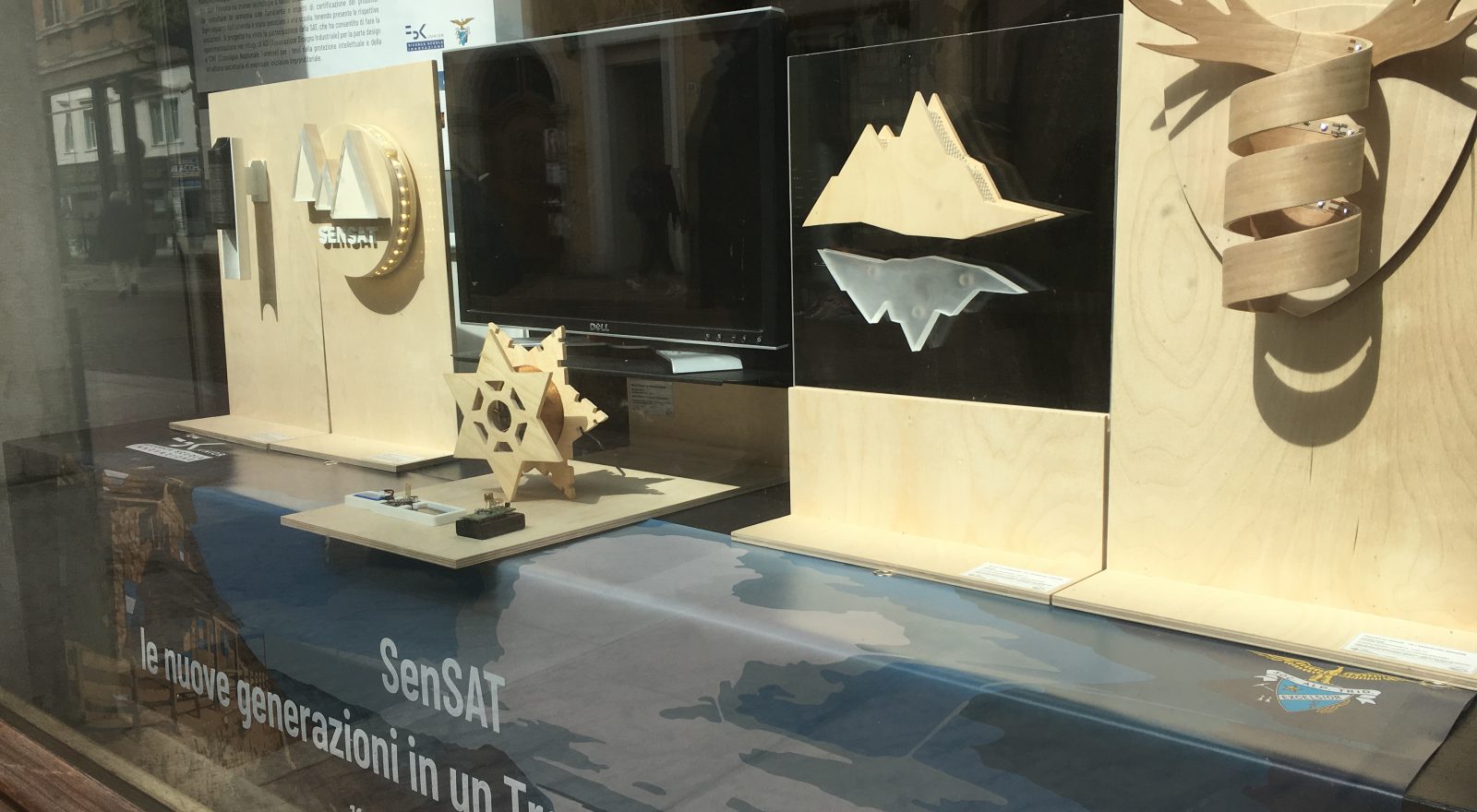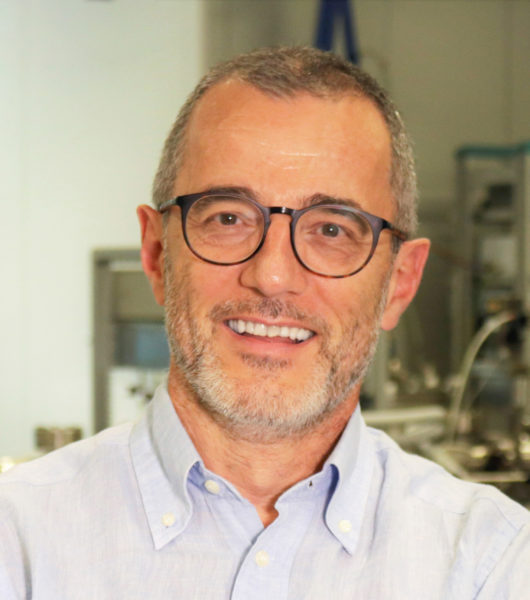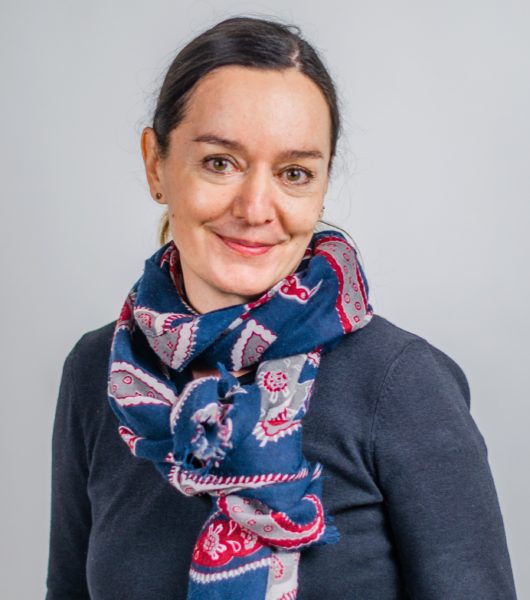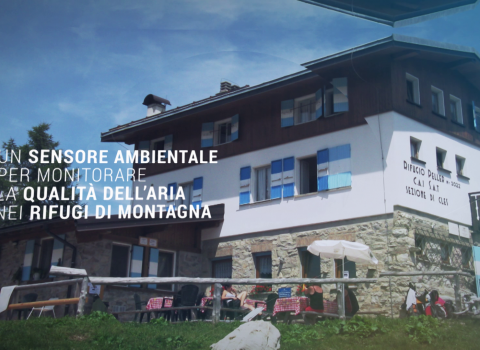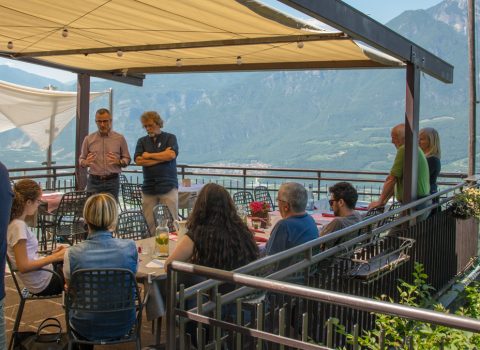
SENSAT, the School-To-Work Program on display
Casa della SAT (the offices of the Alps Hikers of Trento Association) is hosting the exhibition that tells about the project of the School-To-Work Program carried out by students and Fondazione Bruno Kessler until June 2
SenSAT: the new generations in an evolving Trentino, temporary exhibition organized by Fondazione Bruno Kessler and SAT as part of the 67th edition of the Trento Film Festival, to which the Foundation also contributes wirh 4 scientific cafés, opened at the SAT offices on via Manci in Trento today.
The exhibition recounts and presents the results of the SenSAT project, an innovative project of the School-To-Work Program started by Fondazione Bruno Kessler together with seven Trentino-based high schools that saw 265 students working side by side with FBK researchers in the development of an integrated solution for the safety of mountain lodges managed by SAT, with elements capable of set up a distributed control network.An innovative project that led to the development of a tangible Internet of Things application for smart cities, in this case smart land, stemmed in this specific case by leveraging an underlying will, shared with SAT: bringing new generations closer to the mountain setting and, by using technology, taking the kids to higher altitudes, giving them the chance to learn new aspects of the territory and create something that would be useful to mountain environment visitors.
“The entire project – shared and carried out step-by-step together with SAT – was structured so as to simulate a company made up of specialized departments, each with an area to be explored”, said Pierluigi Bellutti, FBK researcher and project scientific manager. In fact, all the elements that characterize the innovation chain were addressed, including legal aspects, market analysis, the development of the business plan, the assessment of the impact that the product would have on the local area and on the environment, and the very development and technology design.
“A multidisciplinary work team was created and each school took care of a single area of development, based on their specific skills – Bellutti added -. Right from the start, the goal was to create a project where kids had he chance to understand how research can have a real impact on the market and on the local area and at the same time create a series of steps that would simulate – and offer it to kids – an experience like the one they would have lived had they been in a company. We are satisfied with this experience which, after Domosens, is the second project of the Work Experience in School of this kind we have carried out at FBK.Indeed we believe that it has paved the way for further projects along this line, which can have a real impact on our local communities”.
“In this second project, which introduces the third one that has just started, we managed to involve a series of local players who have decided, even enthusiastically, to endorse this alternating-school-and-work model – explained Claudia Dolci, Head of the Research and Innovation for Schools Unit at Fondazione Bruno Kessler. With the aim of creating valuable experiences for the students, schools and partners involved, we have created a model that taps into the skills of young students’and leads to the creation of products and solutions for tangible applications. Also, watching the team of partners grow over time can only make us happy because this also means increasing the impact that our work can have on the community, starting from the younger generations”.
The SenSAT exhibition: new generations in an evolving Trentino is part of the Trento Film Festival 2019 events and can be visited for free until June 2, Monday to Friday, 9 am-1pm and from 2-6 pm. It is divided into four panels, located in the atrium of the SAT offices which present the graphic proposals of the sensors developed by the students of the Vittoria Art School, from the initial idea to the design of the final prototype. Next to them a video and a photographic calendar, accompanied by captions, tell the public the stages that marked the start and evolution of the project. In Casa della SAT, on Via Manci instead, the final prototypes of the sensors created by the students are on display. One of these, for demonstration purposes, is equipped with a sensor and projects on a video, in real time, the data collected and processed, as well as the signals coming from two other sensors positioned in Rovereto and in the FBK premises at Povo.
In addition to SAT, which allowed experimentation in mountain lodges, the project was able to count on the collaboration and professional interventions of representatives of ADI (Industrial Design Association) for the design part and CNF (National Forensic Council) for intellectual protection issues as well as for the corporate structure of a potential business initiative. The project received funding from the CARITRO Foundation.
The high schools involved are as follows:
“L. Guetti ”, Tione
“M. Curie ”, Pergine
“Tambosi” Technical Commercial High School of Trento
ITT “G. Marconi ”, Rovereto
“M. Buonarroti-Pozzo ” Technical High School of Trento
“A. Vittoria” Art High School of Trento
“G. Prati ” Ancient languages High School, Trento
